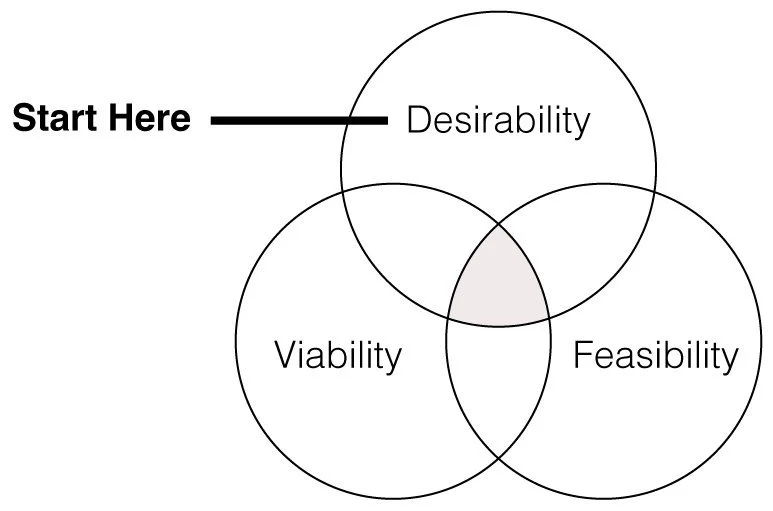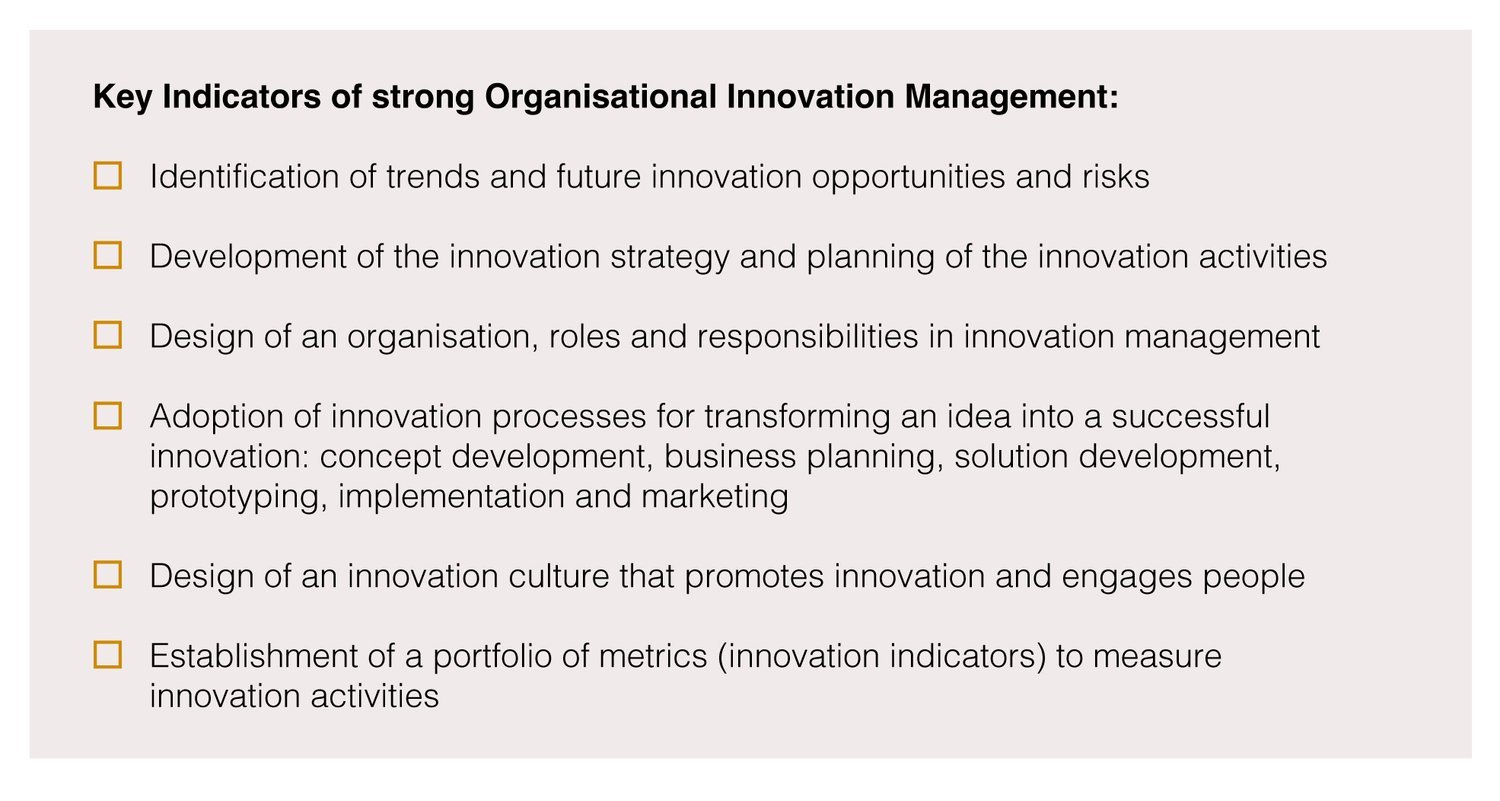Innovation: If you haven’t started, you are already behind
Key insights
Innovation is not your fire blanket.
Like Darwin’s Theory of Evolution, “Survival of the Fittest” means adapting to your changing environment.
Leaders who understand what a ‘focus on innovation’ requires, deliver more impactful solutions to the market.
Determine your Innovation Definition.
Stakeholder over Shareholder.
Be active in your innovation management
With innovation being so important to business sustainability, why are so many leaders avoiding the leap?
You find yourself scrambling to catch up with the latest trends, environmental shifts hit you out of nowhere, and disengaged customers are no longer favouring your offerings.
Your margins are dropping as fast as internal dissatisfaction is rising. And it’s not just your board members; staff are burnt out or bailing ship. Your first thought is “innovation” - but if you find yourself here, it’s already too late. Innovation isn’t your emergency fire blanket. It should be your everyday morning run.
Innovation and the ‘too hard’ basket
The problem is many leaders believe that innovation is a tricky business. The truth is, companies fail to innovate because their business model limitations, organisational capability gaps and leadership's short term focus make it difficult to adjust to new ways of thinking and doing. The fear is driven by uncertainty: “Will the innovation work?”
And not just ‘will it work’ but will the effort be worth it? When organisations are not set-up to effectively innovate, it is difficult to determine how, where or when to start. How to best engage with the Board and stakeholders? How much money is needed? There are seemingly endless unknowns. It is easier to say, "we don't have money", "we don't have time", and "we don't have resources" than to face the prospect of potentially having to change company wide business models and mindsets. When the certainty of impact on the market is viewed as hazy at best, and the business itself is working ‘good enough’, the reality is that leaders just don't see innovation as a priority.
Do we need to put innovation as a priority?
This shouldn't even be a negotiation, and here’s why. A lack of desire to innovate can leave your company in a risky position, especially when everyone around is innovating. Companies that fail to adopt innovative practices and adapt to new consumer demands will get left behind. Charles Darwin was right with his theory of “Survival of the Fittest” when he stated that organisms best adjusted to their environment are the most successful in surviving and reproducing. Innovation is a necessity for survival.
Where there is a will, there is a way.
Leaders who clearly understand what a focus on innovation requires, are more likely to implement innovation processes and resources into their organisational structure, and therefore are able to deliver measurable and impactful solutions to market, in time and on budget, that clients value. Innovation is a daily practice, and those organisations that adopt the discipline are fit and ready when action is needed. The question is then - how do you start. Here are my top three points to help you better understand the best process forwards.
1. Define what Innovation means to your organisation
An organisation’s innovation definition is critical for innovation success. This is the first and most crucial step. In one of our leadership workshops, I asked leaders to write down their definition of an organisation's innovation. It was no surprise that their definitions differed, focusing on their individual business unit points of view (which is not necessarily bad, but has its limits). Next, we were asked to align the organisation’s executives together with its Board, on an Innovation Intent. Immediately it became apparent that there was a crucial misunderstanding from executives in assuming board members had a clear picture of an innovation definition for their organisation. But they didn't. As a result, the Board didn’t support funding requests for innovation. By defining innovation in the organisation, the leadership can develop an Innovation Value Proposition, align with overall strategy and stakeholders, and inspire people to engage more creatively. I'm not suggesting that leaders engage in endless debate about their innovation definition. The logic is simple: Innovation aims to create new value. Therefore, there is no new value without innovation, and without that, there will be no growth. If there is no growth, the company can't stay relevant in its market.
2. Stakeholder value over Shareholder value
Back in the 70’s, Milton Friedman introduced the theory that the "purpose of a corporation" is to maximise profits for shareholders, and the Board's legal obligation today is to protect shareholders' value. Oppositely, The Stakeholder Value Theory (Edward Freeman) argues that any person or organisation with a "stake" in the business should also participate in the business's actions and decisions. This is the better of the two theories to adopt for successful innovation, as it is essential to include stakeholders like employees, customers, shareholders and citizens. When organisational innovation creates stakeholder value, people desire to consume it, employees see their contribution, society benefits, and shareholder value will increase. If people are excluded from the corporation’s strategic focus, they won't see the value and won't want to buy our products. We will therefore not generate revenue which improves shareholders' value. With this in mind, innovation should start with end-users desirability, and be shaped further with feasibility to ensure successful delivery to market. Finally, the viability of creating some value from that matching (not always monetary) should be clearly articulated. It is important to remember that innovation is about finding new ways to create more value, not optimising margins.
3. Be active in your innovation management
Innovation management is the key to turning ideas into action, but only if done well. Like any management process, it needs the proper framework, methods, and tools to facilitate progress. Ironically many businesses are keen to innovate but are not very well equipped with their approach to innovation management. Innovation management is a systematic approach to the organisational, human-centred, technological, and commercial activities that leads to the implementation of ideas. It is a process of promoting and implementing innovations in corporations and includes strategic planning, organisation, execution, and control tasks. Below is a checklist of key activities which show strong organisational innovation management.
The only certainty of failure is by doing nothing.
Begin doing innovation in your organisation to avoid being left behind by your industry players - especially when things are running smoothly. Innovation keeps your finger on the pulse and you one foot ahead. If you are already in innovation, measuring your capabilities and intent can sharpen your activities and improve your measurable outcomes. Time is of the essence. At WAVE, we work with organisations to assess their innovation intent and capabilities. With a defined assessment, we can help our clients build an innovation strategy with a clear roadmap for execution. To quickly improve innovation capability, our team is ready to walk into your organisation and help you drive innovation from day one until you establish your internal capabilities.
And remember, the only certainty of failure is by doing nothing.
Munib is an award-winning marketing and design professional with over 30 years’ experience applying innovation methodologies and human-centred design to create long-term impact for organisations. He has helped to shift the innovation culture at more than one ASX 20 company.
Get in touch
If you need a proven methodology to identify and solve problems, creating a culture of innovation along the way, we are here to help. We’d love to talk more about what you need and how we’ve helped in similar situations.






